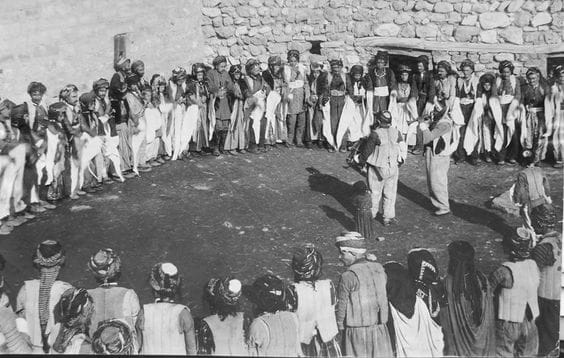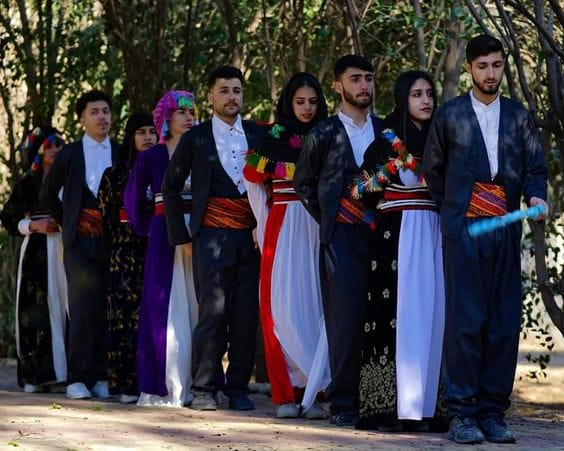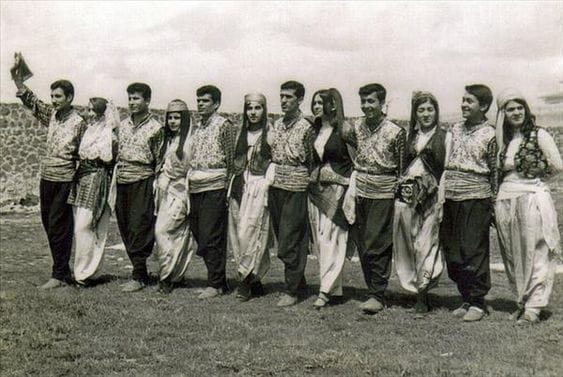Kurdish dance is a part of non-written Kurdish history. There are hundreds of various disasters and events among these dance forms that have not been narrated most of them.
Being oppressed and dominated by other nations, Kurds have not been able to write down most of their historical events but they were able to create and innovate a form of dance that could relate those events through performing them for the people.
"Qambar Yamane" is one of these dances that is a form of Shekhani dance. The story behind this dance is about several friends going to the picnic but suddenly it began to snow; those guys could not find their destination after all due to the swirling snow so they went back to the place they were before. If Qambar Yamane's dance is carefully observed, it can be seen that no matter which way the dancers go, they come back to the first spot each time. In the story of this dance, it has been narrated that those guys who returned to their homes and knocked on the door had told their families: "Open the door, we are about to die." In a part of this dance's poem, it is said: "Qambar Yamane, Qambar Yamane, we lost our way, open the door I'm dying."

There are many Kurdish dances that were carried out on the deceased tombs. One of them is "Shanga". This form of dance is popular in the northern cities of the East part of Kurdistan and the North part of Kurdistan that they perform it on their deceased tombs. If we take a look at the poem of this dance, it says: "Hey Shanga, Shanga, Shakr Agha is happy, the red Mir is killed, every clan knows about it." Thus, the people performed this form of dance over their Mir's tomb. When a Mir would have been killed, the people had complained to Shang. Shang was a happy and enthusiastic character who killed Mir and the people complained about him and said: "why did you do such a bad thing and kill Mir?" The event of killing Mir was written as a poem by the poets, although the poet is not clearly known to be whom and this poem is known to be folklore, and then after reading the poem the people danced over Mir's tomb.

The dance forms I discussed above are numerous and one cannot talk about all of them in a short article. This text is only written to illustrate the Kurdish dance performance and as a Kurdish nation, we must pay a great deal of attention to this part of our culture. In other words, Kurdish dance is both happy and sad, celebration and battle. There are some Kurdish dances that seem like military training and dance performances such as Qambar Yamane, Yarpedar, Akmali, Nare, and … can be mentioned as examples of such dance forms.

If a comparison between Kurdish dance and the other forms of dance from around the world is done, we can say that the greatest feature of Kurdish dance is that more than a hundred people can dance together at the same time, however, in the other forms of dances it is not possible to do so. In other countries' dance forms, only one or two people can dance at a time. Another characteristic of Kurdish dance is the songs or poems, that is there is a great art behind the dance performances and also a long history of uprising, defeats, rising again, and heroism that strengthen the poems' content and make Kurdish dance completely different from the other forms.
Despite being oppressed and dominated by other nations, the Kurdish dance has been able to keep Kurdish stories and narrations alive and transfer them to the new generations.
To be continued…








